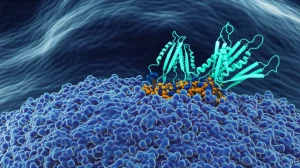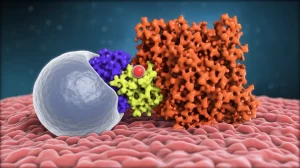Long-Term DJ Tubes: What They Really Do to Your Kidneys
Hey there! Let’s chat about something that affects quite a few folks – those little tubes called double J (DJ) tubes that sometimes need to hang out in your urinary tract. You know, they’re pretty standard stuff in urology, especially for clearing blockages. Since the 70s, they’ve been our go-to for keeping things flowing when something’s getting in the way, whether it’s a pesky stone or something a bit more serious like a tumor.
For a long time, the thinking was, “Great! The tube’s in, the kidney’s protected, urine’s draining, happy days!” And don’t get me wrong, they *are* super effective at sorting out that immediate blockage problem. But, and it’s a big but, what happens when these tubes need to stay in place for a really, *really* long time? Like, years?
Turns out, we haven’t paid as much attention to the *long-term* effects of having a DJ tube hanging around. There’s been this growing pile of clinical evidence suggesting that keeping these tubes in for extended periods might not be as consequence-free as we hoped. We’re talking potential kidney problems, maybe even the kidney shrinking down or losing function entirely. Yikes.
The Big Question
So, that got some smart folks wondering. If these tubes are supposed to *protect* the kidney, why are we seeing cases where kidneys seem to be struggling after years with a stent? Is it just the underlying problem, or is the tube itself playing a role over time?
This study I’m looking at decided to really dig into that. They wanted to see how the *duration* of having a DJ tube in place affects kidney health, specifically looking at kidney size and how well the kidneys are filtering waste.
Diving into the Data
The researchers went back through hospital records, pulling up info on everyone who had a DJ tube put in over a pretty long stretch (from 2010 to late 2024). They focused on cases where the tube had been in for at least *two years*. Why two years? Because previous studies hinted that changes might start becoming noticeable around then.
They ended up with 70 patients who fit the bill. These folks were split into two groups: those with a tube in just one kidney (unilateral, including some with only one kidney to begin with) and those with tubes in both kidneys (bilateral).
What did they measure? They looked at:
- Kidney size: Using CT scans, they measured something called “parenchymal width” (PW). Think of this as the thickness of the working part of the kidney. They measured it *before* the first tube went in and again at the *last* follow-up.
- Kidney function markers: Blood tests for things like eGFR (estimated glomerular filtration rate – a key measure of how well your kidneys filter), serum creatinine (Scr), blood urea nitrogen (BUN), and uric acid (UA). Again, they checked these before and after.
- Other details: Age, sex, how long the tube was in, how many times it was changed, which side it was on, and any other health issues like diabetes, high blood pressure, chronic kidney disease, or the reason for the blockage (benign like stones, or malignant like cancer).
The average time the tubes were in was quite long – about 68 months for the unilateral group and 50 months for the bilateral group. That’s over 5 years and over 4 years, respectively!

What the Numbers Showed (The Nitty-Gritty)
Okay, here’s where it gets interesting.
In the unilateral group (tube in one kidney):
- The kidney with the tube? Its size (PW) shrank by a whopping average of nearly 40%! That was a statistically significant change.
- The *other* kidney (if they had one)? Its size actually *increased* by about 16%. This looks like the healthy kidney compensating for the one with the tube.
- eGFR (filtration rate) didn’t show a statistically significant *overall* change in this group. This is super important – it suggests that because the healthy kidney was picking up the slack, the standard blood test (eGFR) might look normal even if the stented kidney is struggling.
- When they looked at correlations, the *longer* the tube was in, the *more* the stented kidney shrank (negative correlation with PW change). And the *longer* the tube was in, the *more* the eGFR *increased* (positive correlation with eGFR change) – again, likely due to that compensatory effect of the other kidney.
In the bilateral group (tubes in both kidneys):
- Both kidneys showed a significant decrease in size (PW) – an average drop of about 18%.
- eGFR in this group *did* show a statistically significant decrease – down by about 38%! Since both kidneys had tubes, there wasn’t a healthy kidney to compensate.
- For correlations, the duration didn’t strongly correlate with PW change (maybe because the sample size was smaller here), but the *longer* the tubes were in, the *more* the eGFR dropped (negative correlation).
So, the big takeaway from the numbers? Yes, kidney size (PW) seems to decrease over time with long-term DJ tubes, especially when they’re in both kidneys. And while eGFR might stay looking okay with a unilateral tube (thanks, compensating kidney!), it definitely drops when both kidneys are stented long-term. This means eGFR alone isn’t a reliable way to check on the health of a *single* stented kidney. Measuring PW might be a better bet.

Why Does This Happen? (Theories)
Okay, so the tubes are helping drain urine, but they seem to have this downside over the long haul. Why? The researchers discussed a few potential reasons:
- Chronic Inflammation and Infection: Having a foreign body like a stent in your urinary tract is basically an open invitation for bacteria. UTIs are common with stents, and the stent surface can grow a sticky layer called biofilm, which makes infections harder to clear. This constant low-grade inflammation can damage the kidney tissue over time, leading to scarring and shrinking. Plus, stents can get encrusted with stones, adding to the irritation. The study actually found a statistically significant difference in positive urine cultures before and after stenting.
- Messed Up Peristalsis: Normally, the ureter (the tube connecting the kidney to the bladder) has these wave-like contractions (peristalsis) that push urine down. A stent basically props the tube open and seems to interfere with this natural squeezing action. Studies in animals have shown a big drop in peristalsis soon after a stent is placed, and it can persist. If the ureter isn’t actively moving urine, it might impact the kidney over time, although the exact mechanism isn’t fully understood.
- Urine Backflow (Vesicoureteral Reflux): The connection between the ureter and the bladder is designed like a valve to stop urine from flowing back up towards the kidney, especially when the bladder is full or emptying. A stent goes right through this valve, propping it open. This allows urine from the bladder – which isn’t as clean as kidney urine and is under higher pressure during peeing – to slosh back up into the kidney. This reflux can happen frequently with a stent and can contribute to infection and damage. Studies show reflux is very common with stents, and the longer the stent is in, the higher the chance of reflux.
- Effects of the Underlying Problem and Treatment: Let’s not forget *why* the stent was needed in the first place. If it was due to cancer, the cancer itself can compress the ureter or affect the kidney. Treatments like radiotherapy (especially in the pelvis) can cause scarring and strictures, and chemotherapy drugs can be directly toxic to kidney cells. These factors can also contribute to kidney damage, making it hard to separate the stent’s effect from everything else going on.

So, What Now?
This study, while having its limitations (it was at one hospital, the number of long-term cases is naturally small because sadly, many patients with malignant causes might not survive that long, and measuring kidney size on CT isn’t perfect), really highlights something important. We can’t just assume that putting in a DJ tube means the kidney is safe and sound forever, especially if it’s in for years.
The fact that the stented kidney can shrink significantly, even while the overall eGFR looks normal (in unilateral cases), tells us we need better ways to monitor these patients. Relying solely on eGFR isn’t enough when only one kidney is stented because the other one is a superstar compensator. Measuring kidney size (PW) on CT scans seems like a promising additional tool, as this study suggests it correlates with how long the tube has been in.

We need more research, maybe bigger studies across multiple centers, to really confirm these findings and, crucially, to figure out the exact mechanisms causing this long-term damage. Understanding *how* it happens might lead to better stent designs, better management strategies, or even alternative treatments for long-term obstruction that don’t have these downsides.
Right now, clinicians might not always pick up on subtle kidney atrophy detected on scans, and even if they do, without a clear understanding of the cause or better alternatives, the treatment might not change. This study is a wake-up call that prolonged DJ tube retention isn’t just about keeping the urine flowing; it might be quietly impacting the kidney’s structure and function over time.

In conclusion, while DJ tubes are essential tools for relieving obstruction, keeping them in for years seems to have a real effect on kidney size, causing shrinkage, particularly noticeable in bilateral cases. And don’t let a normal eGFR fool you in unilateral cases – the stented kidney might still be struggling. We need to be more vigilant, use better assessment methods like measuring kidney parenchymal width, and push for more research into the long-term impacts and potential alternatives. Your kidneys deserve that attention!

Source: Springer







